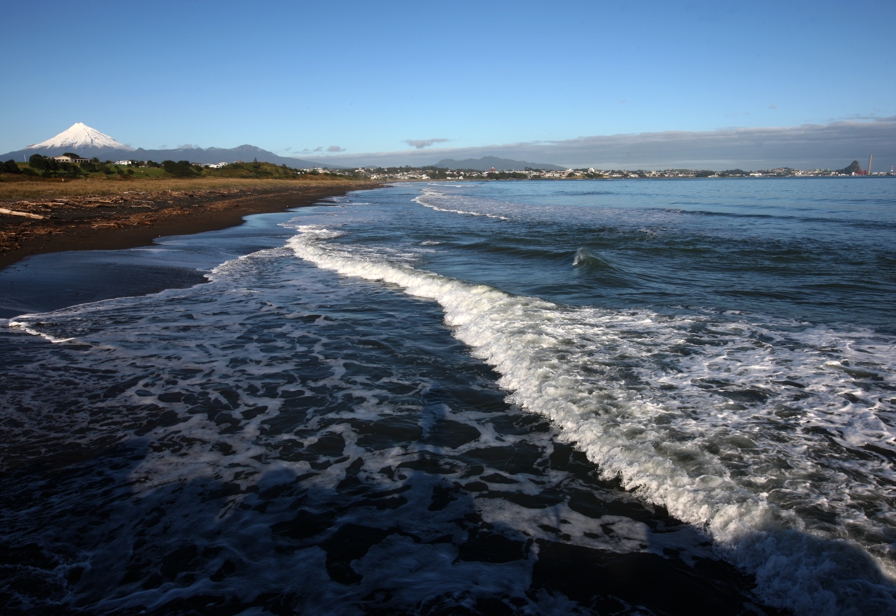Our coast is highly valued for its natural character and as a place for people to play, gather food and relax.


The Taranaki coast

Education Officer Kevin Archer.
This issue of our Schools in the Environment (SITE) newsletter focuses on our coast, what makes it different, how we use it, how we protect it and things we can do to make it even better.
The Taranaki coast is a mixture of high cliffs, estuaries, reefs, rocky shore, marine protected areas, safe swimming beaches, river mouths, wonderful surf breaks and the country’s busiest west coast port.
Coastal water quality
The Council monitors the quality of seawater at popular coastal beaches every summer. Results at our beaches are consistently better than the national average and in 2015/16, 99% of samples were within Ministry for the Environment guidelines for seawater quality.
The Council is one of more than 20 organisations or agencies involved in managing activities on the land, coast and other areas of the marine environment.

Monitoring coastal water quality.
Coastal erosion
Our coastal areas are constantly under pressure from the sea. The coastline can be naturally eroded by scouring at the floor of high cliffs, at the dunes or at the subtidal foreshore.
It takes place mainly during strong winds, high waves, high tides and storm surge conditions which can all lead to coastal retreat and loss of land.
Sand dunes — what are they and what do they do?
A sand dune is an accumulation of sand formed by wind, waves and eroding sandstone. They depend on all three as they are constantly changing.
They act as a natural barrier against storms and waves and often protect houses and other structures further inland.
They act as a storage reservoir during storms in a similar way to how wetlands help to reduce flood impacts.
Four simple measures you can help take to protect our coast:
- Take note of the signs at the beach which show you the best, safest and fastest ways to the water.
- Respect the fences which are erected to protect plants, sand dunes etc.
- Keep off the sand dunes altogether.Important plants and birds live in the dunes. It is their habitat, not ours.
- Next time you go to the coast, take some bags and gather any rubbish you see in the area. There are usually rubbish bins in the area for you to dispose of whatever you collect.
Seawalls, groynes and breakwaters
These artificial structures have had tremendous impact on our region’s beaches. They have been built to alter the effects of sea currents, waves and sand movement and to protect harbours from the open sea. They can prevent special coastal erosion and protect areas on the coast.
Rocky shore studies
There are many rocky reefs along our coastline with a rich diversity of marine life. We are fortunate in that we have a number of suitable rocky shore areas suitable for school groups to study.
How can we help?
- Download our Coast study unit from this page or contact Kevin for your own copy.
- Invite Kevin to talk to your class about rock pool ecology prior to you taking your class to explore a rocky shore area.
- Request a Rocky Shore unit which has been updated recently or download it from this page.
- Request extra resources such as wall charts/estuary, beach or other rocky shore material.
- Invite Kevin to talk to your class about the Taranaki coast and/or read ‘Skalaska’ to your class. This short story contains a strong environmental message about the need to care for our coast.

Sandy Bay, north of Opunake.
Download the full newsletter in PDF format:
The Coast - Te Takutai Moana
Focus on the coast with emphasis on the special nature of the Taranaki coastal environment.
Coast study unit (637 KB pdf) (single document only)Rocky Shore
This unit focuses on the plants and animals that inhabit the many rocky shore sites on the Taranaki coast that are suitable for close investigation by students of all ages.
Rocky Shore study unit (2 MB pdf) (single document only)